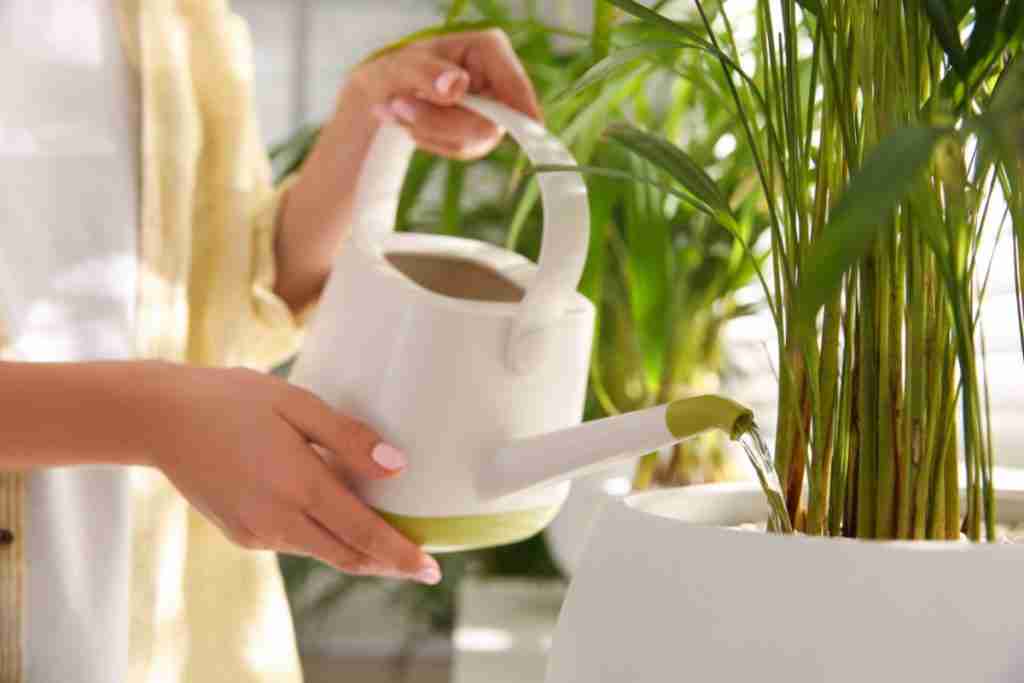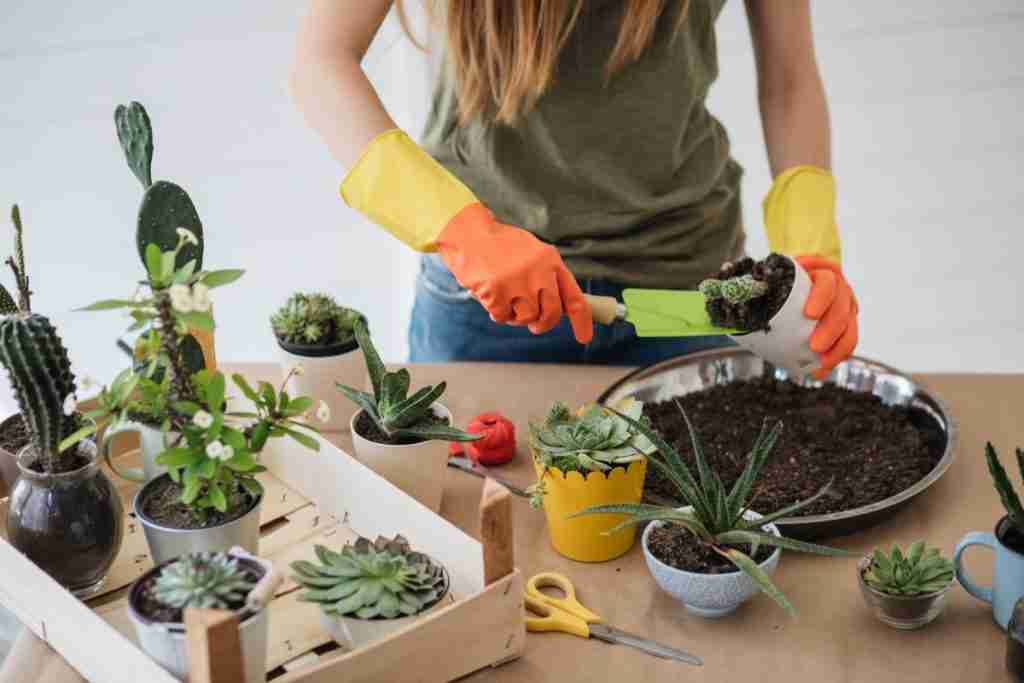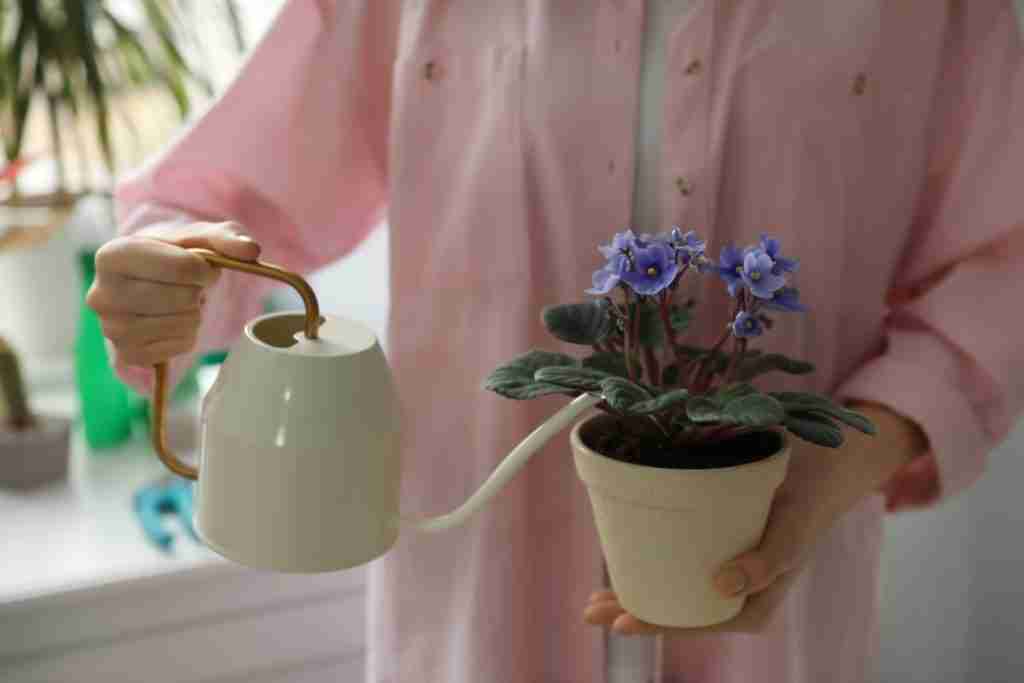
Although the two terms are often used interchangeably, contrary to popular belief, plant food and fertilizer – like liquid fertilizer, plant fertilizer, or all-purpose plant food – are not the same thing. It’s important to understand the difference between the two in order to properly provide your plants with the nutrients that they need.
Keep reading to learn the differences between plant food and plant fertilizer, as well as which one you should be using for your indoor plants.
Table of Contents
What Is Plant Food?
You may be surprised to hear, but plant food isn’t a substance that you yourself add to your plants.
Your plants have the ability to create their own food. They do this through the process of photosynthesis, which involves the combination of sunlight, carbon dioxide, and water.
Carbon dioxide enters your plants through their foliage to react with the chlorophyll and absorbs the sun’s energy, which results in food made of carbohydrates and sugar. With the right combination of nutrients and food, your plant can make its own enzymes, proteins, and vitamins.
Although plants can figure out how to get carbon dioxide on their own and create their own food naturally, you can help the process by ensuring that they get enough sunlight and water. Proper sunlight is needed to provide the plant with enough energy.
Water is absorbed by the plants through the roots and takes the sugar, minerals, and nutrients from the soil with it. This is where fertilizer can help.
What Is Fertilizer?

While plants can create plant food on their own, sometimes they need a few extra nutrients to ensure that they reach their full potential, especially in cold months where the sun and air quality may be lacking. That’s why it’s a good idea to add fertilizer and organic matter to your plant’s soil.
Plant fertilizer contains macronutrients and micronutrients that help your houseplant thrive. It supplements the elements in your plant’s soil to ensure that it’s getting enough of what it needs.
Most fertilizers contain three essential ingredients to plant health:
- Nitrogen (N)
- Phosphorus (P)
- Potassium (K)
Each of these macronutrients plays a crucial role in your plant growth. For example, nitrogen promotes foliage growth. Some fertilizers are made from equal parts of all three of these macronutrients (often labeled NPK), while others contain a larger amount of one of the nutrients than the other two, so it’s helpful to fully understand the needs of your plant before choosing a fertilizer. They may also contain fillers and ballasts.
Natural vs. Synthetic Fertilizer
Fertilizers come in both a natural and synthetic form.
Natural fertilizer, or organic fertilizer, only has ingredients from natural sources, such as manure, fish waste, or compost. Natural fertilizers contain microorganisms that include biological compounds and bacteria that help in your plants’ growth and health. You can either buy natural fertilizer or make your own from scraps and water.
In contrast, synthetic fertilizers are made from chemicals, and often consist of mainly liquid ammonia. Synthetic fertilizers are usually water soluble and are added to plants by diluting them in water first so that your plants can easily absorb their nutrients.
It’s important to note that although synthetic fertilizer may work for your houseplants, liquid ammonia is inexpensive, but has had a negative impact on agriculture overall. Natural fertilizer is a more eco-friendly option that can provide your indoor plants with enough of the nutrients that they need.
There are fertilizer products that are labeled as “plant food,” but these substances are just additives that contain more of the nutrients that your plants need.

Plant Food vs Fertilizer — What’s the Difference?
The three essential differences between plant food and fertilizer are:
- Natural occurrence
- The frequency in which it’s needed
- The purpose
Let’s take a closer look at these three differences.
Natural occurrence
The largest and most important difference between plant food and plant fertilizer to understand is how it occurs.
As mentioned, plant food isn’t a product that you can purchase and add to your plants manually. Your plants create plant food on their own through photosynthesis. However, you can facilitate the process by ensuring that they’re always in ideal conditions, namely:
- Good air quality
- Close proximity to a natural light source
- Sufficient water
In contrast, you must add fertilizer to your plant’s soil yourself. Although it doesn’t occur naturally in your plant as plant food does, there are several different natural fertilizers that you can use to ensure that your indoor plants get the nutrients they need. You can also choose to use synthetic fertilizer for your plants.
The frequency in which it’s needed
Another key difference is the frequency of which each substance is needed.
Plant food is ongoing and you have very little control in how frequently your plant needs food – it decides that for itself.
What you do have control over is how often you add fertilizer to your indoor plants’ soil. The frequency at which you fertilize your indoor plants depends on the season, the type of plant you have, and the type of fertilizer you use.
The frequency at which you add fertilizer to your plants’ soil can range from every few weeks to only once throughout the entire season. Be prepared to fertilize your plants more often in the winter as the air gets drier and your plant’s production of plant food decreases, and to put the fertilizer away in the summer where the natural sources needed for photosynthesis are abundant.
It’s important to note that there is such a thing as your plants receiving too many nutrients, even if they need them to survive. Too much fertilizer can hurt your plants and can lead to illness. The excess salt in your fertilizer can even kill your plants entirely.
If you accidentally over fertilize your plants, don’t worry. You can flush any excess fertilizer out of your plants by providing them with an abundance of fresh water.

The purpose
The last difference between plant food and plant fertilizer is the purpose of each of these substances.
Although both serve the same overall purpose – which is to provide your indoor plants with the nutrients they need – you shouldn’t restrict yourself to seeing it that way only.
The purpose of plant food is to be your plant’s main source of nutrients. It’s important for your plant to be autonomous in the way that it provides nutrients to itself. Your plant is smart enough to know what it needs and how to get it, and it just needs a slight push from you.
Keeping the purpose of plant food in mind, you can then conclude that the goal of fertilizer is to fill in any nutrient gaps that your plant has. It’s important to understand that fertilizer will not be your plant’s only, or even main, source of nutrition. Therefore, you shouldn’t overdo it with the fertilizer, and instead pay attention to clues that your plant could use a little extra nutrition.
Recap
To recap, the main differences between plant food and fertilizer are:
- How naturally each substance occurs
- The frequency of which each substance is needed
- The purpose of each substance for your plant
While they both have the common goal of providing the right amount of nutrients to your plants, they do so in different ways. Understanding how plant food and fertilizer work will help your indoor plants thrive.


